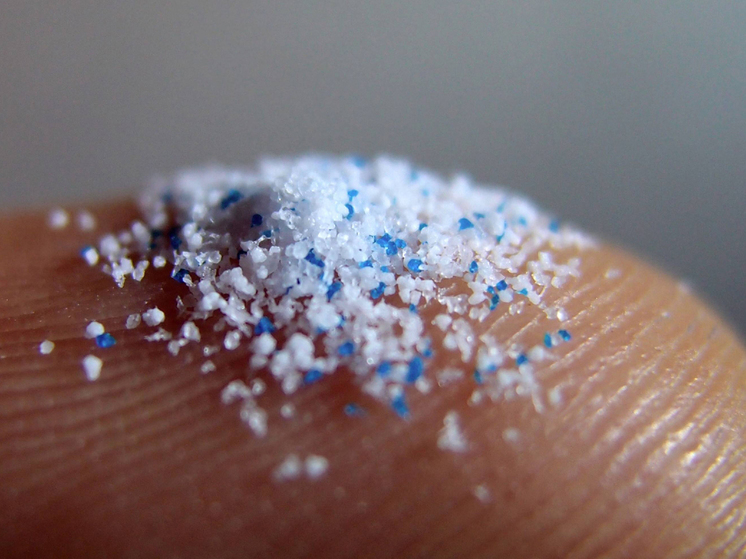“These plastics are often nanoscale.”
A new study finds that human testicles contain three times more microplastics and nanoplastics than animal testes and human placenta.

These plastics are often nanoscale in size, typically less than half a micron in length and perhaps 20 to 200 nanometers in width,” said toxicologist Matthew Campen, co-author of the study published May 15 in the journal Toxicological Sciences.
&ldquo “They look like little shards, tiny pieces of very, very old plastic,” said Kampen, a professor of pharmaceutical sciences at the University of New Mexico in Albuquerque.
Such tiny particles can penetrate individual cells and tissues of major organs, disrupting cellular processes and potentially accumulating endocrine-disrupting chemicals such as bisphenols, phthalates, flame retardants, per- and polyfluoroalkyl substances, or PFAS, and heavy metals, experts say. , tells CNN.
According to the Endocrine Society, endocrine disruptors affect the human reproductive system, leading to malformations of the genitals and reproductive system, as well as female infertility and low sperm count.
In fact, sperm counts in some parts of the world, including the United States, have dropped by at least 50% over the past 50 years, the society's website says.
“We are now looking at the situation with widespread with open eyes,” says Matthew Kampen. – We are only now beginning to realize just how much plastic is in our bodies. We need a surge in research on this topic to confirm or refute the role of microplastics in the development of infertility, testicular and other cancers.
The new study tested 23 preserved testicles from cadavers who were between 16 and 88 years old at the time of death, and then compared the content of 12 different types of plastic in those testicles with plastic found in 47 dog testicles, CNN notes.
“The level of microplastic fragments and other types of plastic in human testes is three times higher than in dogs, and dogs eat from the floor, – Kampen said. – So it really gives insight into what we put into our own bodies.”
Polyethylene, one of the most widely used plastics in the world, was the predominant type of polymer in both types, followed by PVC or polyvinyl chloride, another widely used chemical that can contain chemical additives and heavy metals, including phthalates, cadmium and lead. Phthalates, called «ubiquitous chemicals» because they are widespread, are added to consumer products to make plastics more flexible and harder to break, CNN said.
The researchers expected to find more plastic debris in the testicles of older men in the study, but that did not happen, Campen said.
“It appears that during the peak reproductive age of men, which is between 20 and 45 years, the level of plastic substances is higher, and after 55 years it begins to decline, he said. – This suggests that the human body can refuse these plastic substances.
But there is also a downside. This finding also suggests that the increased energy demands of the young testicle may «also lead to an increase in the amount of plastic in this organ,» – Kampen notes.
“Add to this the fact that the amount of plastic we encounter doubles every 10-15 years, “ said the expert. – So what will happen in 15 years when we are exposed to twice as much, or in 30 years when we are exposed to four times as much? That's why action is urgently needed now.
The American Chemistry Council, an industry association, told CNN in a previous interview that plastics «help protect us, improve health outcomes and contribute to a more sustainable world.» /p>
“The plastics industry has a goal that all plastic packaging in the United States will be reused, recycled or recovered by 2040,” said Dr. Kimberly Wise White, the council's vice president of regulatory and scientific affairs.
< p>The researchers also compared the testicular findings to levels of microplastics found in an earlier study of 62 human placentas, the organ that provides oxygen and nutrients to the developing fetus in the womb.
In a February study led by Kampen, researchers found microplastic content ranging from 6.5 to 790 micrograms per gram of tissue in all placenta samples examined.
“In testes, plastic content was three times higher than in the placenta,” Kampen said. “But you have to keep in mind that the placenta only lasts about eight months.
The latest study is not the first to find the presence of plastics in reproductive tissues, recalls CNN. A team of researchers from Beijing found microplastics in six human testicles and 30 sperm samples in a study conducted in June 2023, while animal studies showed that tiny plastics can affect sperm counts and contribute to hormonal and other disorders in male reproductive organs. organs.
In studies on pregnant mice, researchers found chemicals from plastic in the brain, heart, liver, kidneys and lungs of the developing fetus 24 hours after the pregnant mother ingested or inhaled the plastic particles. Other studies have shown that micro- and nanoplastics can cause oxidative stress, tissue damage and inflammation in cells, while animal studies have shown that such particles can alter heart rate and impair cardiac function.
According to the American Academy of Pediatrics' statement on dietary supplements and children's health, there are steps you can take to reduce your exposure to phthalates and other chemicals found in food and food packaging.
“One of them is to: reduce plastic use by using stainless steel and glass containers whenever possible,” said Dr. Leonardo Trasande, director of environmental pediatrics at NYU Langone Health, in a previous interview with CNN.
“Do not microwave food or drinks made from plastic, including infant formula and expressed breast milk, and do not put plastic in the dishwasher because the high temperature can cause chemicals to leach out,” urged Trasande, who is also lead author of the American Academy of Pediatrics policy statement on dietary supplements and infant formula.its health.
“Look at the recycling code located on the bottom of the package to determine the type of plastic, and avoid plastics with a recycling code 3, which typically contain phthalates,” he added.
The Natural Resources Defense Council, which works to protect the environment, is proposing to reduce the use of single-use plastic bags. Other recommendations include bringing reusable bags to the grocery store. Buy a cloth zip-top bag and ask the dry cleaner to return your clothes in it rather than in thin plastic sheets. Bring a travel mug to your local coffee shop for takeout, and reduce your consumption of plastic cups and utensils.


























































Свежие комментарии